History
In the late 19th and early 20th Century bowling was a popular activity in villages in County Durham but because transport was limited or non-existent there were no leagues. Club members only played on their own greens and any competitions were restricted to amongst themselves.
Let us not forget that in the early part of the last century the world was a much smaller place. People tended to live and work within their own communities and personal transport was for the majority non-existent. Travelling to an away match, even if the club was situated only a few miles away, would be an event requiring the co-ordination of all available ponies and traps, other horse drawn vehicles and the occasional charabanc.
Any inter-club matches were restricted to friendlies. In the years immediately following the Great War, interest in forming an association grew and a number of clubs agreed to hold a meeting to try and progress the matter.
This was held on 3rd June 1922 at the Half Moon Hotel in the heart of Durham City. This hostelry still exists today under the same name and is a popular yet virtually unmodernised pub.
This first meeting was held under the title of the West Durham Bowling League primarily because the clubs were from this part of the County. However, this name was not adopted.
It was called the Durham & District Bowling League, probably in recognition of Durham City being the approximate geographical centre of the area covered.
As I have already mentioned, transport and travel was one difficulty facing a club secretary. Others revolved around club members’ employment and their working conditions. The working week was much longer then. For many this involved Saturdays too and obtaining time off was generally a non-starter apart from the fortunate few who might have a benevolent employer. County Durham in those days was known as ‘King Coal’. There were more than 100 mines and they provided the largest, and in many places the only source of employment.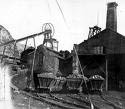
Some clubs regularly left and then re-entered the League. During this period the following clubs played in the League:- Belmont Triangle, Dunelm, Esh Winning, Langley Park, Malton Colliery, Ushaw Moor, Waterhouses, Mainsforth, Dean Bank A, Dean Bank B, Brancepeth, Bearpark, Eldon and Peases West.
Langley Park became the first League Championship winners and were the most successful team winning the League title six times. The first five of these wins were consecutive. Other winners were Ushaw Moor, Dene Bank A and Brancepeth Welfare A (twice winners).
The unsteadiness of the first decade continued with extra clubs joining but others dropped out of the League with regularity so the numbers of members was never consistent for very long. It is perhaps well to consider here the background into which bowls, a leisure activity, fitted. Industry in its heaviest form, gave employment to the bulk of the County Durham population.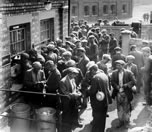
Fundamentally, shipbuilding, iron and coalmining and the manufacture of mining machinery provided the backbone of the county’s economic resources. The contribution made to Britain’s 1939-45 war effort by the worthies of County Durham during six years of toil and sweat was magnificent. The work of these men, both by hand and by brain, did much to keep this country equipped with the sinews of war.
This fact is all the more surprising when it is remembered what a load of bitterness these same miners and shipbuilders carried with them, almost up to the outbreak of hostilities. No county in England was worse hit by the depression that began about 1930. Nobody who would understand County Durham today can do so unless he understands exactly what those years of depression meant to the industrial areas. This luckless area, unplanned, unlovely, without character, form or civic integration, a sordid product of one of the meanest and most grasping ages in all history, nevertheless supported a population on whose labours a large part of the wealth of England had been founded. To it, in the 1930’s came unparalleled economic catastrophe.
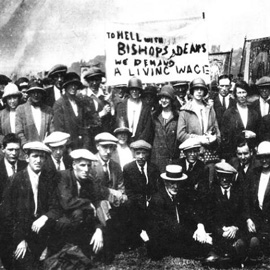 It is not my task here to describe in detail this awful disaster, but it has so seared the life of County Durham that it cannot be altogether omitted. I must, therefore give three instances of what the depression meant to this area.
It is not my task here to describe in detail this awful disaster, but it has so seared the life of County Durham that it cannot be altogether omitted. I must, therefore give three instances of what the depression meant to this area.
“Witton Park and Woodside. Total population two thousand six hundred. Six hundred and seventy persons, or practically every soul available for work, is on the live register, and nearly half of them drawing neither Unemployment Benefit nor Transitional Payments” (i.e. having outrun qualification for them by reason of long unemployment).
“Lessingthorn. Population six hundred odd. Annual cost of Transitional payments and Public assistance nearly £10,000, ninety-eight percent of those on the live register having ceased to be eligible for Unemployment Insurance pay.”
“Butterknowle. Thirty-two percent of the many unemployed have been out of work for more than five years.”
These three villages were not special, they were typical of what was happening throughout the whole of County Durham’s industrial area during that time, and in remembering this story of appalling misfortune it is cause for wonder that ever the County Durham man was capable of honest work, or able to forget his bitterness.
Despite the spread of industrialization, two-thirds of County Durham was given over to farming, most of it to permanent pasture. slag heaps from the mines, pithead machinery and even factories dot a landscape that is otherwise agricultural. (from The English Administrative County of England)
Consider the Bishop Auckland area of southwest Durham. It had 33 coal pits employing 28,000 miners. By 1935 17 pits were abandoned, three more closed and unlikely to reopen, and the remaining 13, where work dragged on with small and irregular shifts, employed 6500 men, though often not on full time. Despite the fact that many families, and particularly the younger men had moved away, unemployment was very high: 80 percent or more of the workers in Tow Law were unemployed, almost 100 per cent of those in Sheldon; at West Auckland only one hundred men out of a thousand had had work in the last seven years. In a street of sixty cottages in one of the mining villages you would hardly find one where the man was at work. C.L.Mowat, Britain between the wars, Methuen 1955
Despite World War 2 raging from 1939-45 as far as the Minutes of the Durham & District Bowling League for that period were concerned the word ‘war’ was never used. The nearest occasion was one entry from a Meeting on 26th March 1940 when it was agreed ‘Teas to be dispensed with during the present crisis’.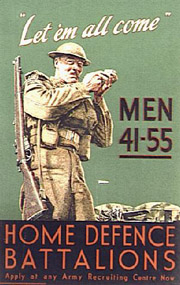
The inauguration of the Hospital Cup two wood triples knockout competition began at a Meeting held on 4th October 1945. (This was probably instigated because of high demands on the Hospital as a consequence of the war. The NHS was not yet created). The Minutes stated that the Secretary write to the Durham County Hospital to provide a trophy and that the League administer a competition.
All proceeds would go to the Hospital. At a Meeting on 7th March 1946 the Secretary reported that the Durham County Hospital had agreed to provide a trophy for the competition. The costs of insurance for the Trophy were to be deducted from the proceeds before paying over the monies to the Hospital.
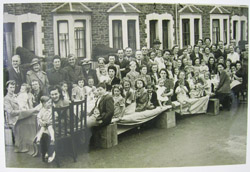 At the 1949 AGM a notice of motion from Langley Park BC “that the club winning the League have the honour and privilege of nominating a President for the ensuing season” was carried. Thus a Mr Carpenter of Langley Park BC became the first League President.
At the 1949 AGM a notice of motion from Langley Park BC “that the club winning the League have the honour and privilege of nominating a President for the ensuing season” was carried. Thus a Mr Carpenter of Langley Park BC became the first League President.
The League Secretary was also instructed to write to all past member clubs to ask them to rejoin the League. There was no response. For the 1950 Season it was agreed to continue with no less than 6 clubs.
There had been many Meetings in the period from 1932 to 1951 especially during the 40s when concerns were expressed about a lack of entries for League competitions which had made some unviable. There were also many unfulfilled fixtures which resulted in the Club officials often being called to attend before the League Management Committee where they were, admonished and fined according to the circumstances
The 1950 and 1951 seasons came and went but after the 1951 AGM when “It was found that we were in a position whereby it was impossible to carry on. The League very reluctantly and with deep regret was faced with no alternative but to be wound up”. This meant that after 30 years it was the end of the road and there would not be a League in 1952.
The future of inter-club competitive bowling in the central area of County Durham looked bleak and in fact in 1952 the League did not function. It ran in 1953 but not 1954. No records exist for 1955 and 1956 and it is assumed the League did not exist in these years.
The organisers of the Festival of Britain envisaged it would be a country-wide celebration of Britain’s history, achievements and culture. A popular event that would help Britons forget the trauma of war and contribute to the post-war ‘re-construction’ of morale. Gerald Barry, the Festival Director, summed up the hopes of the organisers by referring to it as a ‘tonic to the nation’.
The Festival of Britain provided a more extensive opportunity to showcase the collective and individual ‘achievements’ of Britons. Events dealt with history, industry, science, the arts and explored various aspects of cultural and everyday life at mid-century.
Meetings began again in 1957 and 7 clubs were in favour of restarting and another two joined, as well. It was during this season that one of the most controversial and far reaching changes was made to the rules of the League. At a pre-season Meeting on 25th April 1957 Addison Park asked if ladies could be alllowed to play in a team as some clubs had difficulty in fielding a full team especially in mid-week when a number of men were at work. Brancepeth objected, but others did not when it was realised games could be played where before they would have had to be postponed. Only one lady per rink was allowed and she had to play at first wood. Sacriston raised an amendment that one lady be allowed to play in any position. This change was agreed and the League became a mixed league.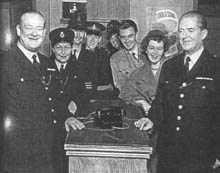
In 1958 the number of clubs playing was again 6 and this number increased to 9 in 1959. The 60s began with the League starting to appear more settled. 1961 saw the League expand to 12 clubs and these were split into two divisions League A and League B. At the end of the season the winners of both leagues played each other to decide the championship and league A winners won. With 3 more clubs joining in 1962 the League reverted to a one division format and over the next few years the membership fluctuated on and around the 16 mark.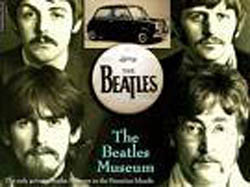
Into the 70s it had become a large stable body having grown to a total membership of 21 clubs. This caused problems fitting 20 matches into the short outdoor season. Further expansion was not possible until 1984 when the League was again split into two divisions with a maximum of 10 teams in each. Each club playing each other twice – home and away. Now the problem was not one of shortage but growth. In 1988 two became three divisions. Although not always consisting of 30 teams this has been the format ever since.
This is a far cry from the early days and the fifties when there were only 6 clubs or worse, none at all. In 2009 there were 28 clubs and at the 2009 AGM 3 prospective new members appplied to fill 2 outstanding vacancies. The two clubs elected were Spennymoor and Houghton Dairy Lane. It meant that in 2010 the Leaguecomprised 30 clubs in 3 divisions of 10 clubs each.
With promotion and relegation opportunities the league is a lively and interesting competitive scene. Matches are restricted to Saturdays only. A good quality club in terms of the skill of its playing members can enter the league and quickly progress until it reaches its level of competence.
There are some clubs which have set notable records. Glenholme has won the Championship 17 times since joining in 1971 including a straight run of 7 wins. This achievement was beaten by Leeholme with 8 consecutive wins – a record – although its total of 10 Championships between 1996 and 2007 is less.
The future of the League is presently secure although there has been a steady reduction in club numbers over recent years. In 2014 it stood at 26 and in 2017 22. However it is still one of the larger and more important bowling bodies within Co Durham.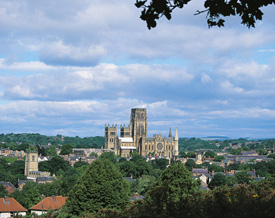
Falling membership numbers at many clubs is a concern for their continued well being. The age profile is steadily rising and more needs to be done throughout the area to attract younger players to this fine sport which encourages sportsmanship, discipline, good behaviour and the development of skill and talent.
Nowadays, it is not only bowls which is suffering from a lack of interest. There are far more alternatives available to the modern generation than earlier in the League’s history when the World was a much larger place and visiting another nearby town or village was a rare occasion.
With the attractions of TV, travel and computers amongst many alternatives there appears to be a reluctance to engage in club and group activities. Pubs once a social centre for a community are disappearing as people spend more time at home where they have so much entertainment at their finger tips.
A record has been maintained of all clubs who have been a member of the League from its inception.
